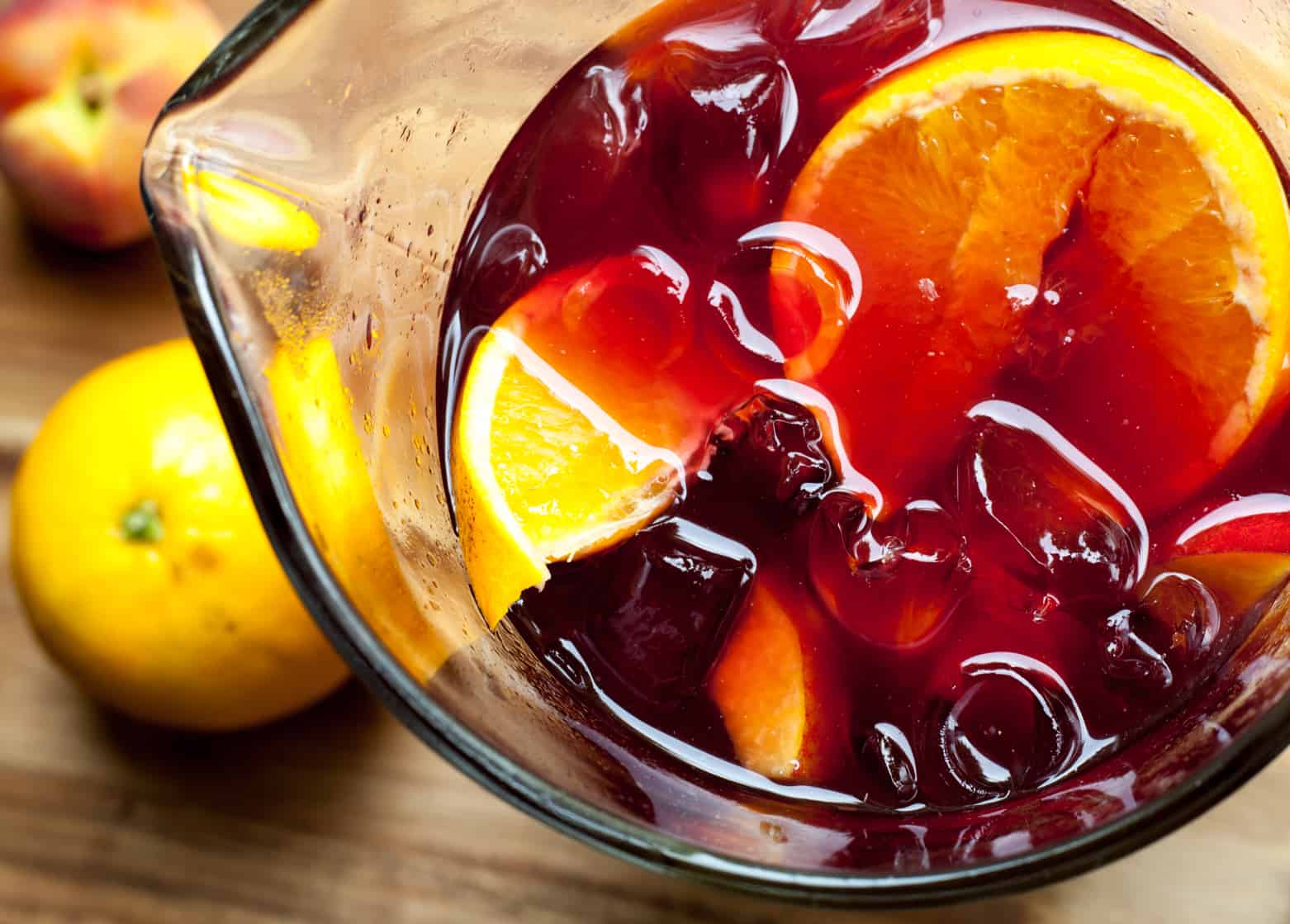During the warm spring and summer months, few drinks are as refreshing as fresh fruit sangria. Delicious seasonal fruit flavors mingle with rich red wine to form a beverage that is perfect for nearly every occasion. Bartenders in Europe and the Americas have perfected the sangria recipe over the years, using Spanish red wine for tradition while adding unique touches to make the flavor distinctive. Among the many sangria recipes, the best sangria is now at your fingertips… Read on for a recipe that will tantalize your tastebuds, making you the hit of family gatherings, parties, and events all summer long.
Sangria: A Brief History
In its simplest form, red sangria is a perennial favorite of drinkers around the world. This wine punch is relatively easy to prepare at home or on a commercial scale, but it benefits from a careful selection of fresh ingredients and the red wine or white wine used as its base.
Sangria’s history goes back to the Greek and Roman times when wine was mixed with spices or fruits and mulled before serving. Wines were consumed due to the poor quality and safety of drinking water; adding alcohol to the water helped to disinfect it. Some people simply avoided water drinking altogether, and chose wines instead!
In the early 700s, Spanish vineyards produced wines in abundance. Those wines were put on hiatus when the Moors conquered the region, and it wasn’t until the 1400s when their control over Spain ended. When the Moors left, sangria – a variation of the word “blood” in the Spanish language – returned with a passion. Although sangria recipes have evolved since their humble beginnings (we’ve seen additions from triple sec to sparkling water to ginger ale), it remains incredibly popular as a summertime beverage.
Preparing the Perfect Red Sangria Recipe
Spanish wines like Tempranillo and Garnacha, or those from the Rioja wine region, serve as the foundation for the traditional Spanish sangria recipe. In order to ensure the very best flavors, bartenders carefully select the wines used in the preparation of this summery beverage. If Spanish varieties are not available, any quality red can be substituted. Portuguese varieties are a good fill-in, as well. Some mixologists prefer to use a splash of wine brandy or rum added to the mixture. Brandy and rum offer significantly more horsepower, and their complex flavor signatures stand out against the fruits and spices in the recipe.
To make the best traditional concoction, individuals or professional mixologists attempt to cover a range of flavors and “mouthfeels”, including: Sweet, Fruity, Lush, Velvety, Rich, Smooth, Dry
The ingredients are relatively simple to make wine sangria at home. Whether you choose white or red wines as your base, the rest of the sangria ingredients remain the same. This delicious recipe makes four generous servings.
Ingredients
– 1 bottle of red wine (stick with Spain dry red, or substitute white for a lighter flavor)
– 1/2 medium apple, skin on and chopped into small pieces
– One orange, half unpeeled with seeds removed and chopped into small pieces and the other half sliced into rounds or wedges for garnish
– 3/4 cup fresh-squeezed orange juice
– 1/2 cup fresh-squeezed lemon juice
– 1/2 cup handmade simple syrup (made with a turbinado sugar or maple syrup)
– 1/3 cup brandy or rum (brandy preferred). If you desire a higher alcohol content, 1/2 cup brandy can be added.
– Ice
Directions
1. In a large pitcher, combine the chopped fruits and the simple syrup. Muddle with a wooden spoon, gently pressing the fruits to release their natural juices.
2. Add the orange juice, lemon juice, and brandy to the pitcher, then stir gently.
3. Add the wine to the pitcher and stir. Balance the flavors as needed, with an extra pinch of sugar or the addition of more chopped fruit and fruit juices. Remember that every batch of fruit and juice will have slightly different levels of acidity, by nature.
4. Stir in ice to chill. Pour the wine punch into glasses, then garnish each with an orange slice. Don’t let it sit – You’re ready to serve your homemade beverage!
Variations on the Traditional Sangria Recipe
Professional bartenders know that traditional drink recipes are hallowed, but they are also perfect springboards for creativity. Wine punches like sangria are no exception. Apples, oranges, and lemons are used in many recipes, but these are not the only fruits to choose from. To make a unique and absolutely delicious variation on the classic, seasonal fruits like strawberries, peaches, or fresh melon can be muddled gently in the bottom of the pitcher. Your imagination is your only limitation – add your favorite fruits as they become available for a refreshing new take on this Spanish drink classic.
Spices are another method bartenders use to give the traditional flavors a new kick. Add a cinnamon stick or splash in a 1/4 cup of Grand Marnier. Your guests will thank you for sharing your creative spirit and wonderful refreshing beverages!

